In the vast realm of nature, sight is often considered the most crucial sense for survival. But what if some creatures don’t need eyes to navigate their world effectively? Evolution has crafted remarkable solutions for organisms that live in environments where traditional vision offers little advantage. From pitch-black ocean depths to underground tunnels, these animals have developed alternative methods to “see” without eyes. Some species have lost their eyes through evolution, while others never developed them in the first place. Their sensory adaptations not only challenge our understanding of perception but also inspire technological innovations in various fields. Let’s explore 13 fascinating creatures that prove eyes aren’t the only way to perceive the world around us.
13. Star-Nosed Mole Touch-Based Vision

The star-nosed mole (Condylura cristata) possesses one of nature’s most extraordinary adaptations for navigating without relying on vision. Its most distinctive feature is its nose, which consists of 22 fleshy appendages arranged in a star-like pattern. This unique structure contains over 25,000-minute sensory receptors called Eimer’s organs, making it the most sensitive touch organ known in any mammal. Although star-nosed moles have eyes, they’re tiny and provide minimal visual information. Instead, these creatures “see” through touch, using their star-shaped nose to create a detailed sensory map of their surroundings. Research has shown they can identify prey in as little as 8 milliseconds, making them among the fastest foragers on Earth. These remarkable mammals spend most of their lives in underground tunnels where vision would offer little advantage, demonstrating how evolution can favor alternative sensory systems in specialized environments.
12. Mexican Tetra Evolution of Blindness

The Mexican tetra (Astyanax mexicanus) offers scientists a fascinating case study in the evolutionary loss of vision. This species exists in two distinct forms: a surface-dwelling form with functional eyes and a cave-dwelling form that has lost its eyes entirely. The cave-dwelling variant, commonly known as the blind cave fish, began to lose its eyes as it adapted to the perpetual darkness of underground cave systems. Over generations, maintaining energy-expensive eyes that served no purpose became evolutionarily disadvantageous. Instead, these fish developed enhanced sensory abilities through their lateral line system, which detects minute changes in water pressure and movement. They also evolved larger jaws and more numerous taste buds to better locate food in darkness. Remarkably, research has shown that the genetic mechanisms behind eye degeneration might be linked to other beneficial adaptations, suggesting that the loss of vision wasn’t merely a neutral mutation but potentially provided survival advantages in their specialized environment.
11. Sea Urchins Whole-Body Vision System
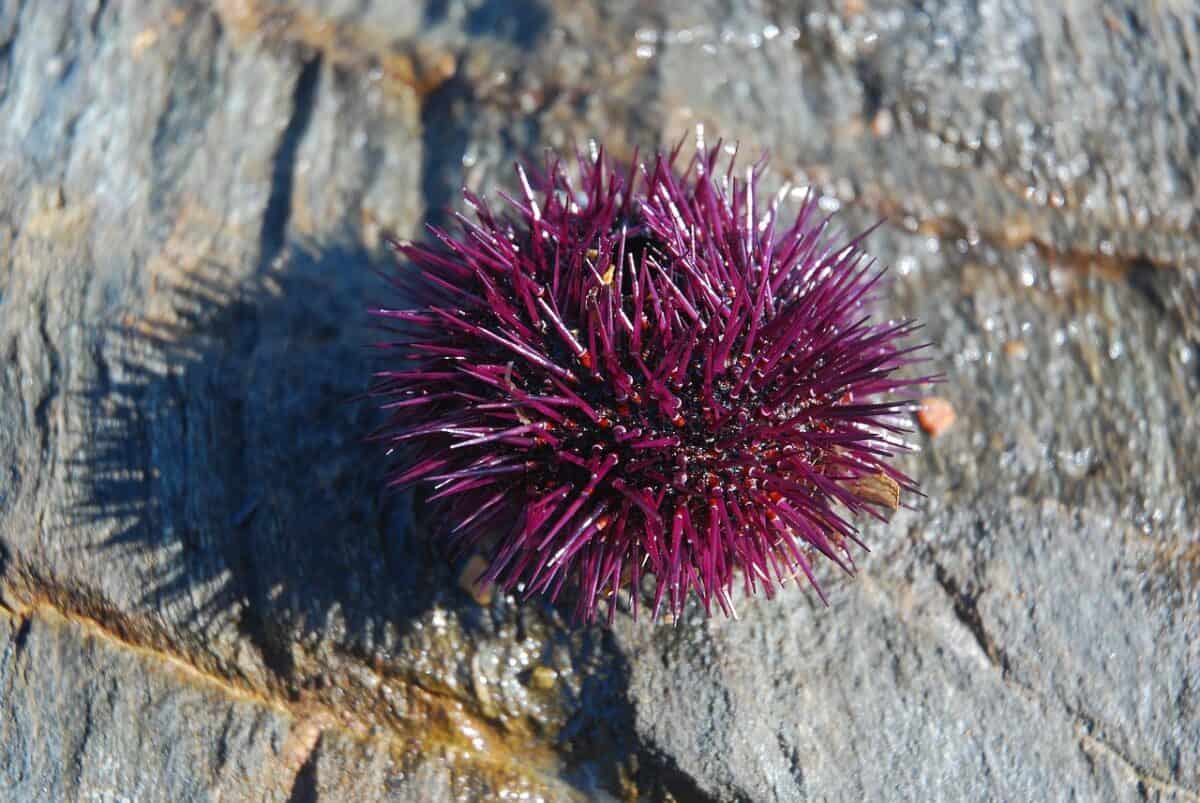
Sea urchins represent one of nature’s most unusual approaches to vision without dedicated eyes. These spiny marine creatures possess a whole-body vision system that allows them to detect light, shadows, and movement despite lacking any conventional visual organs. Their entire body surface is covered with light-sensitive cells that collectively function as a distributed visual system. The research published in the journal “Proceedings of the National Academy of Sciences” revealed that sea urchins accomplish this remarkable feat through specialized tube feet and spines containing photoreceptor cells similar to those found in more complex eyes. This distributed vision system enables sea urchins to detect approaching predators and navigate toward suitable habitats. When a shadow passes overhead, the urchin can quickly respond by pointing its spines toward the potential threat. This form of “seeing” demonstrates that complex visual perception doesn’t necessarily require centralized organs like eyes, challenging our conventional understanding of vision and sensory systems.
10. Blind Snakes Sensory Scales

Blind snakes comprise a diverse group of snake families (Typhlopidae, Leptotyphlopidae, and Anomalepididae) that have evolved to thrive underground with minimal or no visual capabilities. Despite their name, some blind snake species possess rudimentary eyes covered by scales, while others have completely lost their visual organs through evolution. Instead of relying on sight, these serpents have developed highly specialized sensory scales covering their bodies that detect vibrations, temperature changes, and chemical signals in their environment. Their smooth, glossy scales help them glide effortlessly through soil while providing tactile information about their surroundings. Blind snakes primarily feed on termites, ants, and their larvae, using chemical sensors to track prey. Their distinctive shovel-shaped snouts enable efficient burrowing, while specialized cranial structures protect their brains during this process. Despite their reduced visual capabilities, blind snakes have successfully colonized tropical and subtropical regions worldwide, demonstrating that alternative sensory systems can fully compensate for the absence of vision in specialized ecological niches.
9. Chambered Nautilus Primitive Pinhole Eyes

The chambered nautilus (Nautilus pompilius) represents a living fossil whose visual system offers insights into the early evolution of eyes. Unlike its cephalopod relatives such as octopuses and squids, which possess highly advanced camera-like eyes, the nautilus has simple pinhole eyes without lenses. These primitive organs function similarly to a pinhole camera, with light entering through a small aperture to form an image. Despite the simplicity of this structure, nautiluses navigate effectively in their deep-sea environment, where light is scarce. The pinhole design actually provides certain advantages in dim conditions, as it allows for greater depth perception and reduces the need for focusing mechanisms. Research suggests nautiluses can detect objects at distances of several meters and can distinguish between simple patterns. These ancient marine mollusks typically inhabit depths between 300-600 meters, rising to shallower waters at night to feed. Their unique visual system demonstrates that even primitive eye structures can provide sufficient sensory information for successful survival across 500 million years of evolutionary history.
8. Cave Crayfish Antennae as Sensory Tools
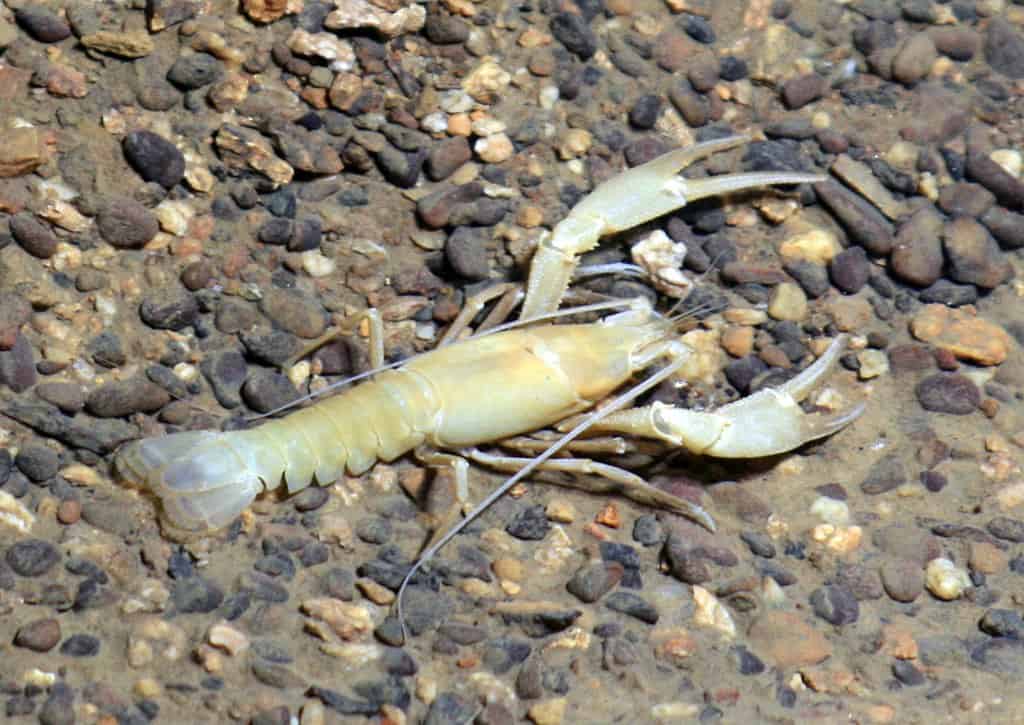
Cave crayfish, particularly species like Orconectes pellucidus, have evolved in perpetually dark underground aquatic environments where eyes serve little purpose. Through evolutionary adaptation, many cave crayfish species have lost their pigmentation and eyes entirely, developing instead highly sensitive alternative sensory systems. Their primary tools for navigation and environmental perception are their remarkably specialized antennae. These elongated sensory appendages are covered with thousands of chemoreceptors and mechanoreceptors that detect minute chemical signals and water movements. Cave crayfish can sense potential prey, predators, or mates from considerable distances through these chemical and mechanical cues. Additionally, their bodies are covered with sensitive setae (hair-like structures) that detect water currents and vibrations, essentially creating a three-dimensional sensory map of their surroundings. Research has shown that cave crayfish can discriminate between different food sources purely through chemical detection, and their sensitivity to vibrations allows them to respond to potential threats long before physical contact occurs. These adaptations demonstrate how specialized sensory systems can fully compensate for the loss of vision in environments where light is absent.
7. Earthworms Light-Sensitive Skin
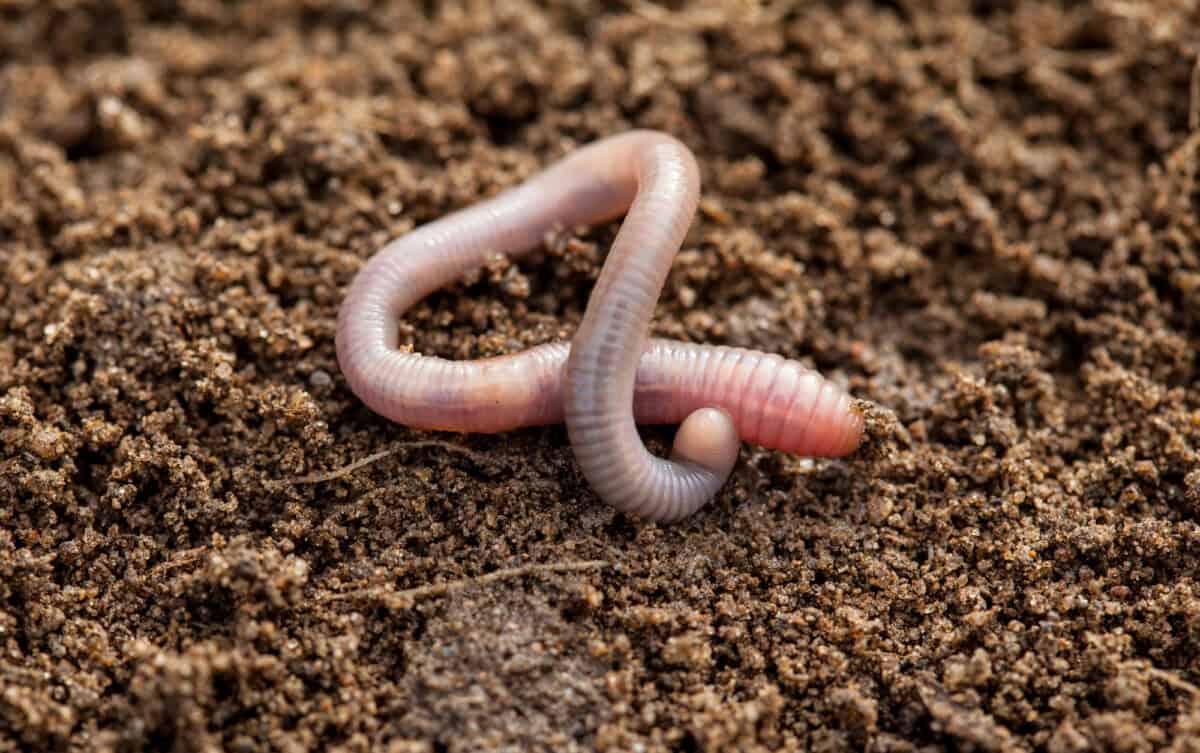
Earthworms (Lumbricidae family) lack dedicated eyes yet possess a sophisticated system for light detection that permeates their entire body. Their skin contains specialized photoreceptor cells that are particularly concentrated near their anterior end. These light-sensitive cells, while not forming images, allow earthworms to detect light intensity and direction with remarkable sensitivity. This ability is crucial for their survival, as exposure to light can be dangerous—earthworms risk desiccation and predation in daylight. Research has shown that earthworms can detect light that is thousands of times dimmer than what humans can perceive. When exposed to light, they typically demonstrate negative phototaxis, meaning they move away from the light source and seek darkness. This sensory system enables them to remain safely underground during daylight hours and emerge only when conditions are suitably dark and moist, usually at night or during rainy periods. Their ability to detect light through their skin exemplifies how distributed sensory systems can effectively replace centralized visual organs for organisms with specific ecological needs.
6. Eyeless Spiders Vibration Specialists
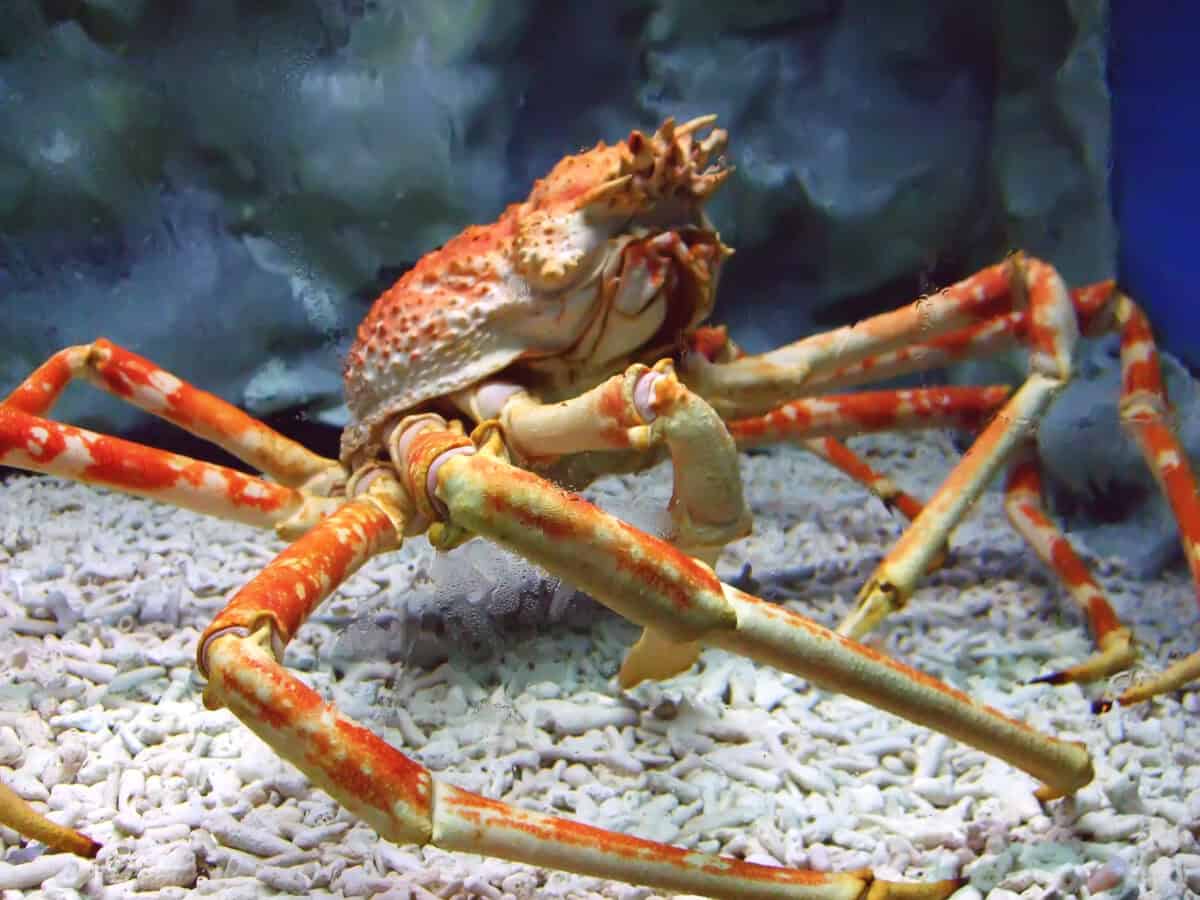
Cave-dwelling eyeless spiders, such as those from the family Sicariidae, have evolved remarkable adaptations to compensate for their lack of visual perception. Unlike their surface-dwelling relatives that primarily rely on vision for hunting, these specialized arachnids have developed extraordinarily sensitive mechanoreceptors throughout their bodies, particularly on their legs. These receptors, called trichobothria and slit sensilla, can detect the slightest air currents and vibrations, allowing the spiders to construct a detailed mental map of their surroundings. When prey disturbs a web strand or moves across the cave floor, these vibrations travel through the substrate to the spider’s legs, providing precise information about the prey’s location, size, and movement pattern. Some eyeless spider species can even distinguish between the vibrations caused by potential prey versus those of predators or environmental factors. Their pedipalps (appendages near the mouth) contain dense chemoreceptors that analyze chemical signatures once prey is captured. Research has demonstrated that these spiders can successfully hunt in complete darkness with an efficiency that rivals sighted species, proving that specialized tactile sensory systems can fully compensate for the evolutionary loss of vision.
5. Planarians Light-Sensing Cells

Planarians, particularly species like Schmidtea mediterranea, represent a fascinating example of creatures that sense light without conventional eyes. These flatworms possess specialized photoreceptor cells called ocelli distributed across their body, with the highest concentration near their anterior end. While not forming images like vertebrate eyes, these photosensitive structures detect light intensity and direction, allowing planarians to navigate their environment effectively. The ocelli contain photopigments similar to those found in more complex eyes, suggesting evolutionary connections to advanced visual systems. When exposed to light, planarians typically demonstrate negative phototaxis, meaning they move away from light sources—a crucial behavior that helps them avoid predators and desiccation. Research has shown that planarians can learn and remember light-associated environmental cues, indicating that their simple light-sensing system interfaces with relatively complex neural processing. What makes planarians particularly remarkable is their regenerative ability—if their body is cut, each section can regenerate a complete organism, including new photoreceptors in the correct anatomical positions. This regenerative capacity has made planarians important model organisms for studying the development and evolution of sensory systems.
4. Olm Skin-Based Light Detection

The olm (Proteus anguinus), sometimes called the “human fish” for its pale flesh-colored skin, is an aquatic salamander that dwells exclusively in the underground cave systems of the Dinaric Alps in Central and Southeastern Europe. Through millions of years of cave adaptation, the olm has developed a suite of remarkable sensory adaptations to compensate for its eyelessness. While olms technically begin development with small eyes, these organs regress during development and become covered by skin, rendering them non-functional in adults. Instead, the olm’s entire skin contains specialized photoreceptor cells that can detect very low levels of light, allowing these creatures to sense when they might be approaching cave entrances or artificial light sources. Research published in the Journal of Comparative Physiology has demonstrated that olms can detect light wavelengths ranging from ultraviolet to blue-green spectrum. Beyond light detection, olms possess extraordinarily sensitive electroreceptors that can detect minute electrical fields generated by potential prey organisms. Combined with keen chemical sensing through an enlarged olfactory system, these adaptations allow olms to hunt effectively in total darkness. These remarkable sensory substitutions have enabled olms to thrive in their subterranean habitat for over 20 million years, making them one of the most successful cave-adapted vertebrates on Earth.
3. Hydra Primitive Light Sensitivity
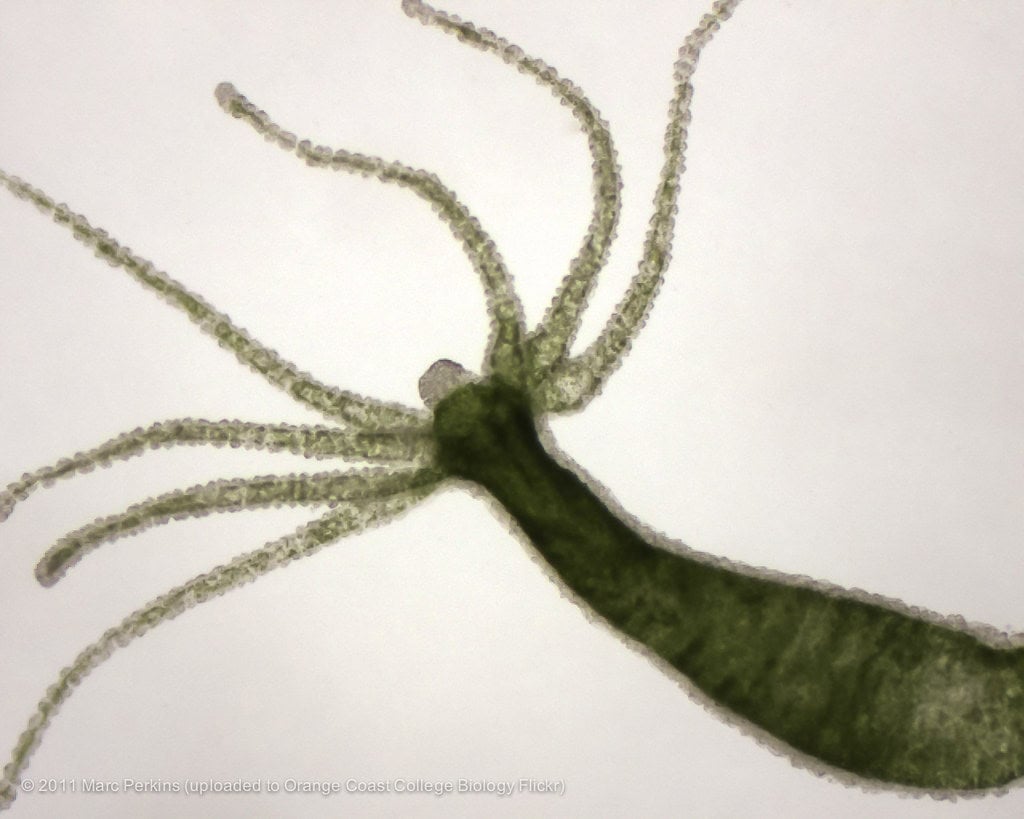
Hydra, small freshwater organisms belonging to the phylum Cnidaria, demonstrate one of the most ancient forms of light sensitivity without dedicated visual organs. These seemingly simple tubular creatures, often less than a centimeter long, possess specialized cells throughout their body that contain opsin proteins—the same light-sensitive molecules found in human retinas. Research published in the journal “PLOS Biology” revealed that hydra can detect light across their entire body surface through these dispersed photoreceptive cells. This distributed light-sensing system allows hydra to respond to changes in light intensity and direction, helping them determine optimal positions for feeding and reproduction. When exposed to sudden light, hydra typically contract their bodies as a protective response. Interestingly, genetic studies have shown remarkable conservation in the molecular basis of light detection between hydra and more complex animals, suggesting that these primitive light-sensing mechanisms represent evolutionary building blocks from which more advanced visual systems developed. The hydra’s light sensitivity exemplifies how even organisms that emerged over 600 million years ago evolved effective methods for gathering crucial environmental information without centralized sensory organs, highlighting the ancient evolutionary roots of photoreception.
2. Mole Rats Whiskers and Thermal Sensing
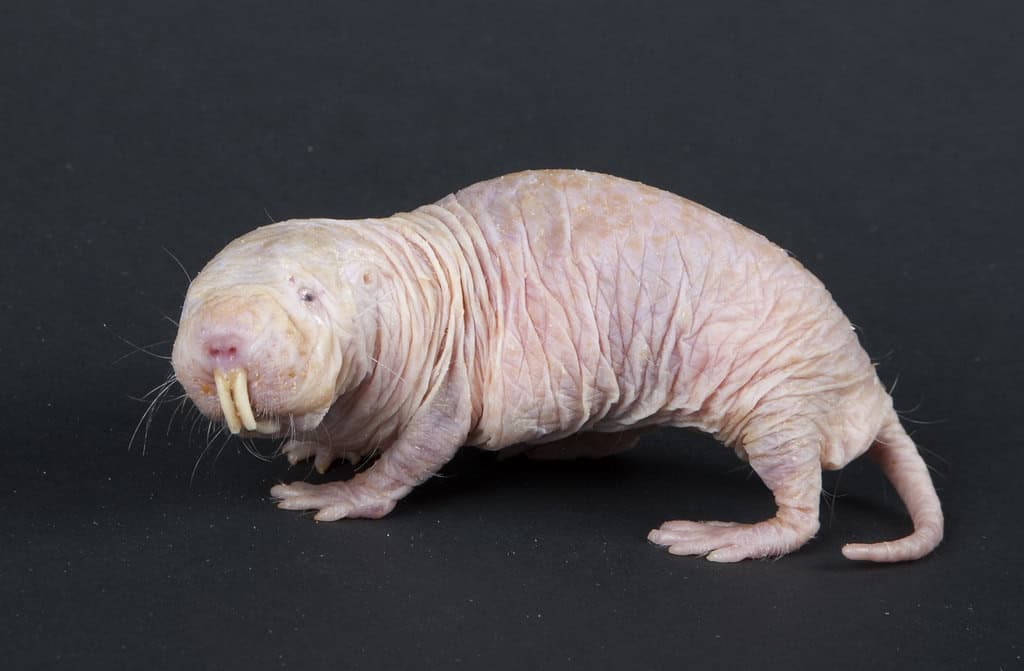
Naked mole rats (Heterocephalus glaber) and blind mole rats (Spalax species) have evolved extraordinary sensory adaptations to thrive in their subterranean lifestyles without relying on vision. These remarkable rodents have eyes that are either greatly reduced or completely covered by skin, rendering traditional vision practically nonexistent. Instead, they’ve developed highly specialized tactile systems centered around their facial whiskers (vibrissae) and body hairs. These structures are connected to dense clusters of mechanoreceptors that create detailed “touch maps” of their tunnel systems. When a naked mole rat moves through tunnels, its whiskers constantly brush against the walls, providing real-time spatial information processed by specialized areas in its somatosensory cortex. Research published in “PLOS ONE” demonstrated that naked mole rats can also detect subtle temperature gradients through specialized thermoreceptors in their skin, allowing them to locate optimal nesting areas and avoid dangerous conditions. Additionally, their enhanced sense of smell, supported by a proportionally larger olfactory bulb than most mammals, helps them identify colony members, detect predators, and locate food sources. The blind mole rat has even evolved to use seismic signals, detecting vibrations through its head pressed against tunnel walls. These multifaceted sensory adaptations demonstrate how evolution can produce sophisticated alternatives to vision for species in specialized ecological niches.
1. Box Jellyfish Vision Without a Brain

The box jellyfish (Cubozoa class) challenges our understanding of vision by possessing a sophisticated visual system despite lacking a centralized brain. These marine invertebrates have developed an array of 24 eyes grouped into four clusters called rhopalia. Each cluster contains different eye types, including simple pit eyes that detect light direction and more complex lens-containing eyes capable of forming images. What makes this system particularly remarkable is that it functions without a centralized brain to process visual information. Instead, the box jellyfish has a distributed nervous system with neural rings that coordinate visual input directly with motor responses. Research published in “Current Biology” demonstrated that box jellyfish use visual cues to navigate through mangrove roots, avoid obstacles, and locate prey with remarkable precision. Their visual system allows them to distinguish between different underwater landscapes and even detect terrestrial features visible through the water’s surface. Some species can also perceive color differences, particularly in the blue-green spectrum dominant in their aquatic environment. The box jellyfish represents one of nature’s most fascinating examples of how complex sensory processing can evolve without the conventional brain structures typically associated with vision, challenging our assumptions about the prerequisites for effective visual perception.
The Remarkable Diversity of Non-Visual Perception

The remarkable adaptations discussed in this article reveal nature’s incredible diversity in solving the fundamental challenge of environmental perception. These 13 creatures demonstrate that vision extends far beyond the conventional understanding of eyes and optical processing. From distributed photoreceptors and vibration detection to electrosensing and thermal perception, evolution has produced numerous effective strategies for organisms to “see” their world without traditional eyes. These alternative sensory systems not only allow creatures to survive in specialized niches where vision offers little advantage but also inspire biomimetic technologies in fields ranging from robotics to medical devices. As we continue to study these remarkable adaptations, our understanding of sensory perception expands, reminding us that evolution’s solutions to biological challenges often exceed the limitations of our own imagination.
- The 10 Largest Stingrays Ever Found in American Waters - August 14, 2025
- 15 Loudest Animals on Earth - August 14, 2025
- 15 Common Mistakes When Caring for Pet Birds - August 14, 2025

